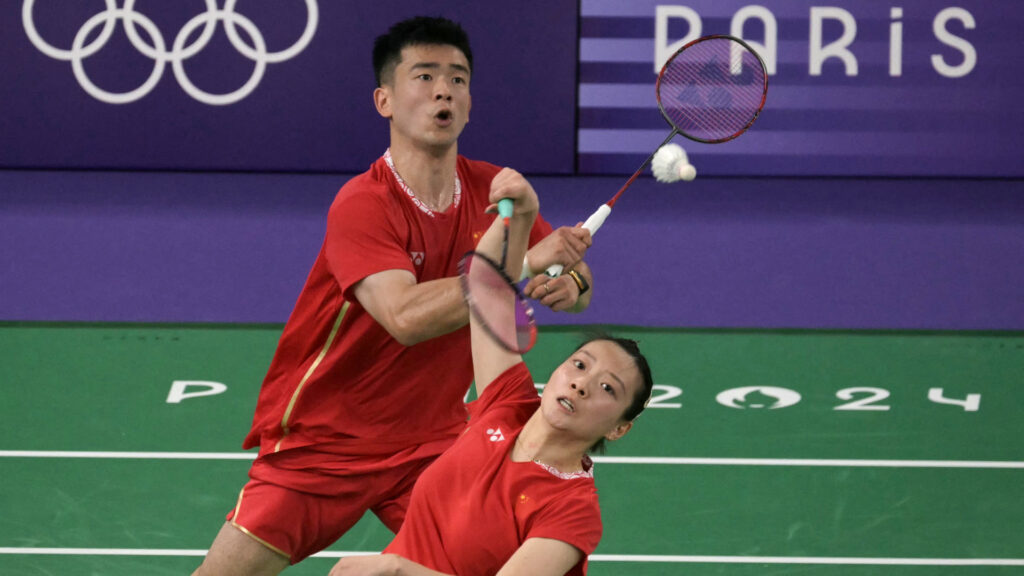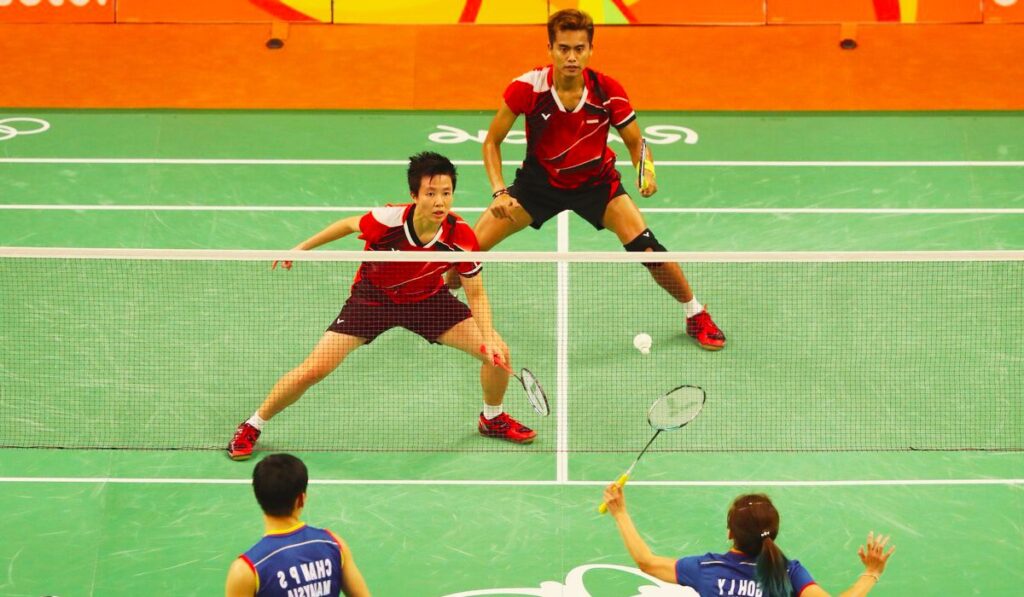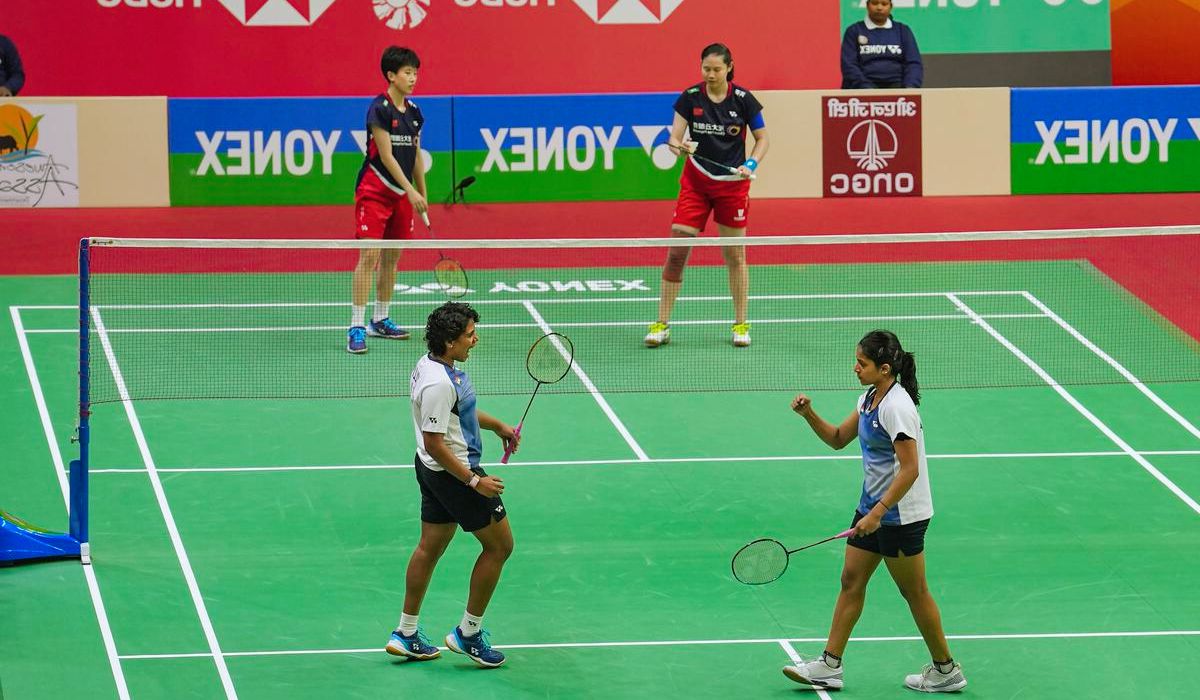When it comes to doubles badminton, the serve is not just the way to start a rally—it is the tone‑setter for the entire point. Observing doubles serve rules badminton closely defines fairness and rhythm in the match. Get the serve right, and you open opportunities; get it wrong, and small errors can cost huge points. These rules rarely get the emotional weight they deserve, yet they belong at the heart of fair, exciting doubles play.
Set the Scene: How Serve Defines the Flow
Picture this: two pairs at the net, the shuttle poised above the racket, tension in the air—and then, the serve is contested. Your partner steadies your nerves, your racket feels light and confident, and you send the shuttle over with precision. That sensory moment—when the feathered shuttle arcs across the net—carries power. That visual and physical finesse embodies everything the doubles serve rules badminton aim to preserve.
The Basic Rules: Foot Placement and Shuttle Height
Let’s break down the essentials: for a legal doubles serve, both feet must stay stationary and in contact with the ground until contact is made. The server must strike the shuttle below their waist—not above the lowest rib and not above the wrong height. The shuttle must travel upward upon contact. These seemingly minor details ensure fairness and equal opportunity for both teams.
The Delivery Angle and Body Position
Beyond height, the racket head must be pointing downwards on contact—not open or upward. The racket shaft must be below the hand, and wrists must not flick upward to generate deceptive power. These nuances stop players from abusing angled deliveries and maintain a consistent level of play that balances control with accessibility.
Understanding Court Positioning and Service Rotation
Service rotation in doubles is more complex than singles. The direction of serve depends on whether the score is even or odd—partners alternate positions accordingly. This mechanism ensures that advantage never stays stuck in one half of the court. Mastering this system is key to executing the doubles serve rules badminton correctly and avoiding costly service faults.
The Odd-Even Score System
When your team’s total score is even, the serve goes from the right service court to the opponent’s right service court; if your score is odd, serve from the left. That simple rule ensures balance, yet many players get tangled at match point pressure. Emotional agility is as important as technical precision.
Service Faults That Most Beginners Miss
Here are common breakthroughs: body leaning over the service line, shuttle rising unusually after contact, feet moving before contact, or racket angle being too high. These details often slip under players’ radar. Learning these intricacies will help you prevent faults that feel invisible until they cost a match.
Partners’ Coordination: The Unspoken Rule
Doubles requires synchrony. When you serve, your partner must be ready behind you, still and alert. Any unnatural movement from either partner can cause distraction or misjudgment. That silent understanding is as much a part of doubles serve rules badminton as the letter of the law. Good teams learn to breathe together.
Emotional Highs and Lows: Impact of a Great Serve
Landing a perfect serve sends a surge through your body: your shoulders relax, your mind sharpens, and your partner smiles back. Conversely, a serve fault under pressure can rattle both of you. The gap between confidence and dismay often narrows to the quality of that initial delivery.
Serving Strategy: Placement, Power, and Control
Some players serve short to push the returner forward; others serve flicks that catch opponents off guard by quickness. A legal serve under the rules doesn’t prevent tactical variation. Using spin, disguise, or pace within the regulations can transform the serve from a protocol into a strategic advantage.

Common Pitfall: Serving Too High
One of the biggest mistakes is serving the shuttle too high, which turns what should be a short serve into an unintended attacking opportunity for opponents. Maintaining correct height and angle is essential. Practicing under pressure helps your muscle memory lock in the correct delivery every time.
The Speed of Delivery: How Timing Defines Advantage
Timing in serve is crucial. You and your partner must establish a pace—neither too slow that you become predictable nor too fast that drift misaligns your position. Within the framework of doubles serve rules badminton, speed becomes part of your identity as a serving pair.
Variants by Age Group or Rule Set
Youth or beginner circuits sometimes simplify serve rules (like allowing broken serves or simplified rotation). But once you enter competitive adult-level play, full observance of rules is expected. Understanding the official doubles serve rules badminton early avoids confusion during transitions into formal leagues.
Video Review: Learning by Seeing the Serve
Watching slow-motion video of pro doubles serves helps you absorb details: racket angle, shuttle trajectory, foot stillness. Many players gain confidence simply by visually recognizing legal vs fault serves. Seeing the nuance empowers you to replicate precision under pressure.
Practice Drills That Reinforce Serve Compliance
You can reinforce basic rules by practicing serves in isolation: stand still, serve repeatedly, focus on shuttle height and racket angle, and ask a partner to call faults. These repetitive drills develop muscle memory and build confidence. Consistency here translates directly into fewer mid-match errors.
Psychological Pressure When Serving at Match Point
Match point serves bring more than just technical pressure—they stir emotions. In tight doubles, know that your serve might decide the match. Here, understanding and trusting the doubles serve rules badminton becomes a source of mental armor. When the rules become instinct, confidence takes over.
The Post-Fault Reaction: How to Reset Fast
A serve fault can break momentum—but your reaction after it matters most. Good teams reset mentally: they take a breath, nod, and re‑align quickly. The ability to recover emotionally from a service error shapes the rest of the match and often signals who will stay calm and consistent.
Advanced Serving Techniques Within the Rules
Once basic compliance is mastered, players look to innovate: subtle wrist flicks disguised as soft serves, precise slide into the shuttle to change timing, or angled blade contact to veer off center. These tricks live within the rules—but deliver a deceptive edge. The more finely you read the doubles serve rules badminton, the more you can warp them strategically.
Why Serving Rules Exist: Fairness, Flow, and Focus
At its core, those detailed rules exist not to burden players but to protect fairness and flow. Without strict serve regulations, the game devolves into chaos: uncontrolled advantage, injured players, and confused opponents. That knowledge makes respecting the rules feel purposeful—and even empowering.
Coaches’ Insights: Common Errors and Fixes
Many coaches highlight serve errors in early sessions. Common advice includes “keep shoulders square,” “don’t lean forward,” “maintain racket head down,” and “serve in correct court based on score.” Simple language, repeated reminders—these fix issues faster than complex explanations.
Competitive Doubles Serve Rules vs Recreational Play
At recreational clubs, officiating can be forgiving. But in tournaments, umpires are strict: each serve is scrutinized. Becoming comfortable with the rules—rather than relying on leniency—prepares you for both relaxed sessions and high‑pressure competitions. It’s about mastering the discipline first and then enjoying creative serve variation.
How Online Resources and Communities Can Help
Many online forums, coaching channels, and badminton communities discuss serve legality controversies. Watching real cases—where serves are called out for subtle faults—helps you mentally map what compliance looks like. Listening to umpire explanations in post‑match interviews reinforces understanding too.
The Link Between Serve Quality and Team Chemistry
Serving is not a solo act in doubles. It reflects your partnership’s coordination. Good teams practice serve‑receive patterns, communicate hand signals, and know which partner handles tight serves best. Serving becomes part of the duo’s shared rhythm—anchored by the rules but elevated by trust.
Sensory Experience: What a Perfect Serve Feels Like
A perfect serve feels like smooth silk sliding off a seam—quiet, instant, impactful. You sense the shuttle depart cleanly, the court responds without exaggerated noise, your partner moves in sync, and your opponents stiffen. That emotional thrill makes serve compliance feel less like rigid law and more like expressive art.
The Surprising Role of Grip and Racket Angle
When serving, even how you grip changes the feel and legality. A relaxed, high collar grip positions the blade differently than a low, tense grip. Subtle shifts in wrist placement alter angle and shuttle lift. Many players learn the rules faster once they experiment with small grip modulations and observe how serve behavior changes.
Checking Self in Matches: In‑Game Tips
During live games, check your stance regularly. Keep breath steady, body upright, and shoulders calm. Mentally remind yourself: shuttle below waist, racket head down, serve from correct side based on score. Mindfulness like this increases awareness and reduces mistakes during pressure points.
When Partners Disagree: Communicating Serve Strategy
If you and your partner conflict on serves—who goes on which side, who takes odd/even combos—discuss it before the match. Clarity prevents panic. Use simple calls: “even on my right”, “I take flick serve”, “you cover short”. This consent-based coordination reduces confusion during service sequences.
Understanding the Receiver’s Positioning
In doubles badminton, the receiver’s position is just as crucial as the server’s. If you stand in the wrong service box, your team can be penalized instantly. Many beginners forget to adjust their position after each point. Always ensure you’re in the correct diagonal court based on your team’s current score. Mispositioning might cost your side an easy point, especially during tight games.
What Happens After the Serve?
Right after the serve, the whole court becomes fair play. This is a rule that catches many off guard. While the serve has to land in the front half of the diagonal box, once the shuttle is returned, players can aim anywhere in the opposing court. So, court coverage and swift footwork become the essence of winning in doubles matches. Understanding this rule helps you anticipate returns more smartly.
Common Serving Faults to Avoid
Even advanced players occasionally fall into the trap of common serving faults. These include serving above the legal waist height, striking the shuttle in an upward motion incorrectly, or the racket not pointing downward. These might seem like minor technicalities, but in professional play, they can lead to heavy penalties. Knowing these faults inside out keeps your serve clean and consistent.
The Power of a Tactical Low Serve
One often-overlooked strategy in doubles is the power of a well-placed low serve. Unlike a high serve, which can be risky in doubles, the low serve keeps the shuttle just over the net and forces the receiver to lift the shuttle. This creates a golden opportunity for the server’s partner to intercept with an aggressive smash. When executed precisely, a low serve can change the course of a match.
Switching Sides After Each Point
In doubles, switching sides after scoring is not optional—it’s a rule. If your team scores a point while you’re serving from the right side, your next serve must come from the left. This continuous switching keeps the rhythm of the game dynamic and tests your presence of mind. Forgetting to switch can be called as a fault, disrupting momentum and leading to confusion on court.
Coordinating With Your Partner
Communication is key in doubles badminton. During serves, you and your partner must be in sync. Decide beforehand who covers the net and who hangs back. Miscommunication during or right after a serve can leave parts of the court wide open, giving your opponents a clear advantage. Simple hand signals or a quick word before the serve can iron out many potential mistakes.
How Serve Influences Rally Length
A well-executed serve sets the tone for the rally. In doubles, rallies are fast and fierce, often ending within a few shots. A weak or faulty serve is an invitation for the opponent to attack aggressively. By contrast, a sharp, tight serve makes the return harder and forces your opponents into a defensive stance right from the start. This subtle shift often determines the flow of the game.
Timing and Rhythm in Doubles Serves
Every good serve has a rhythm. Rushing your serve or being too hesitant can break your focus and cost you valuable points. In doubles, you must balance urgency with precision. Taking just the right amount of time to prepare, breathe, and deliver the serve can help maintain consistency, especially in high-pressure scenarios.
Mastering Serve Variations for Unpredictability
Repetition can be dangerous. If you always serve the same way, opponents will catch on quickly. That’s why mastering serve variations—short serve, flick serve, drive serve—is so powerful. Mixing up your serves keeps your opponents guessing and unsettles their rhythm. This unpredictability gives you a psychological edge in competitive matches.
Why Rules Matter More Than Ever Today
Modern badminton has become faster, more technical, and incredibly competitive. With instant video reviews and on-court officials trained to spot the slightest infractions, sticking to the serve rules is non-negotiable. By understanding and mastering these rules deeply, players can serve with confidence, avoid unnecessary penalties, and focus purely on outplaying the opponent.

Learning from the Professionals
Watching top-level doubles matches is one of the best ways to improve your understanding of serve rules. Professional players have mastered the art of legal yet deceptive serving. By closely observing how they position themselves, time their serves, and apply variations, you gain valuable insights that no textbook can teach. These lessons can be applied directly to your own game, giving you an edge over similarly skilled players.
Pressure Serving in High-Stakes Moments
Serving under pressure is an entirely different skill. Whether it’s game point or a crucial rally in a tournament, nerves can disrupt even the most well-practiced serve. That’s why training your mental toughness is just as important as refining your serve technique. Learning how to breathe, focus, and block out distractions can help you deliver a flawless serve when it matters most.
Impact of Serve Rules on Strategy
The doubles serve isn’t just a formality—it’s the foundation of strategy. Teams often design their entire opening move based on the type of serve. For instance, a flick serve might provoke a deep lift, setting up an attacking opportunity from the rear. On the other hand, a short serve can bait a net kill attempt that you’re already positioned to counter. Knowing how the rules shape these dynamics allows you to play smarter, not just harder.
Training Drills for Better Doubles Serves
To get better at serving in doubles, consistency is key. One effective drill is to set a small target just past the short service line and practice hitting it repeatedly. Another is to have a partner return your serve so you can train your response immediately after. These drills build both technical sharpness and real-game reflexes. Over time, your serve will stop being a weakness and become a true weapon.
Mastering the Serve
Serving in doubles badminton is a skill that blends precision, strategy, and mental discipline. Understanding the rules is just the beginning. To truly master it, you need to practice under pressure, study opponents, vary your approach, and most importantly—play with confidence. When your serve is solid, every rally starts with control. And in a fast-paced doubles game, that control can mean the difference between victory and defeat.
Final Thoughts: Mastering Serve Is Mastering the Game
In doubles badminton, the serve is not just legal procedure—it’s a moment of assertion, strategy, and partnership. Understanding the doubles serve rules badminton elevates not only your technical game but also your mental resilience, teamwork, and creativity. Done right, the serve becomes your silent signature on the court—supporting fair play and launching purposeful points.


2 thoughts on “Doubles Serve Rules Badminton: Empowering Precision or Frustrating Complexity”